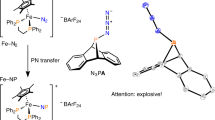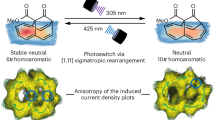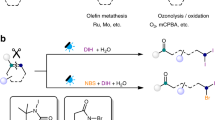Abstract
THE origin of the biological specificity of polycyclic hydrocarbons has long confronted investigators interested in carcinogenesis. The affinity and the extent of physical binding of carcinogenic and non-carcinogenic polycyclic hydrocarbons (for example, 3,4-benzpyrene against 1,2-benzpyrene or 1,2,5,6-dibenzanthracene against 1,2,3,4-dibenzanthracene) to DNA cannot be correlated with carcinogenicity1. Chemical complexes of polycyclic carcinogens with DNA have been found in biological systems2,3, and the available data indicate that the extent of complex formation may be correlated with the carcinogenic potency of these compounds3. Ts'o and Lu4 have reported the formation of a covalent linkage between 3,4-benzpyrene (3,4-BP) and DNA in aqueous solution, induced by photoirradiation. Preliminary experiments with carcinogenic and non-carcinogenic hydrocarbons have shown no selective activation of carcinogenic compounds by photoirradiation. Rapaport and Ts'o5 have achieved a covalent linkage between 3,4-BP and DNA by X-irradiation which suggests that polycyclic hydrocarbons may be activated by hydroxyl radicals. Rochlitz6 reported that a covalent linkage between 3,4-BP and pyridine had been induced by iodine vapour in a pyridine–solid phase system. Here we wish to report the formation of a 3,4-BP–DNA covalent linkage in an aqueous, neutral solution, at 0°–50° C, induced by peroxide and iodine. Little or no 1,2-BP–DNA chemical complex formation was found in identical conditions. Thus the chemical reactivity of this pair of isomers with DNA in the present aqueous system can be correlated with their carcinogenicity.
This is a preview of subscription content, access via your institution
Access options
Subscribe to this journal
Receive 51 print issues and online access
$199.00 per year
only $3.90 per issue
Buy this article
- Purchase on Springer Link
- Instant access to full article PDF
Prices may be subject to local taxes which are calculated during checkout
Similar content being viewed by others
References
Lesko, S. A., Smith, A., Ts'o, P. O. P., and Umans, R. S., Biochemistry, 7, 434 (1968).
Heidelberger, C., and Davenport, G. R., Acta Unio Intern. Contra Cancrum, 17, 55 (1961).
Brookes, P., and Lawley, P. D., Nature, 202, 781 (1964).
Ts'o, P. O. P., and Lu, P., Proc. US Nat. Acad. Sci., 51, 272 (1964).
Rapaport, S. A., and Ts'o, P. O. P., Proc. US Nat. Acad. Sci., 55, 381 (1966).
Rochlitz, J., Tetrahedron, 23, 3043 (1967).
Lewis, I. C., and Singer, L. S., J. Chem. Phys., 43, 2712 (1965).
Forbes, W. F., and Robinson, J. C., Nature, 217, 550 (1968).
Fried, J., and Schumm, D. E., J. Amer. Chem. Soc., 39, 5508 (1967).
Marcoux, L. S., Fritsch, J. M., and Adams, R. N., J. Amer. Chem. Soc., 89, 5766 (1967).
Author information
Authors and Affiliations
Rights and permissions
About this article
Cite this article
UMANS, R., LESKO, S. & Ts'o, P. Chemical Linkage of Carcinogenic 3,4-Benzpyrene to DNA in Aqueous Solution induced by Peroxide and Iodine. Nature 221, 763–764 (1969). https://doi.org/10.1038/221763a0
Received:
Revised:
Issue Date:
DOI: https://doi.org/10.1038/221763a0
This article is cited by
-
Asbestos-catalyzed oxidation of benzo(a)pyrene by superoxide-peroxidized microsomes
Bulletin of Environmental Contamination and Toxicology (1987)
Comments
By submitting a comment you agree to abide by our Terms and Community Guidelines. If you find something abusive or that does not comply with our terms or guidelines please flag it as inappropriate.



